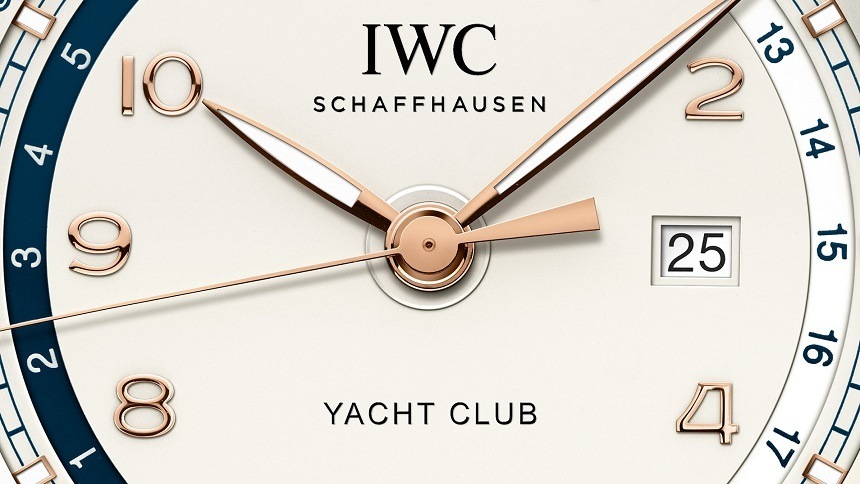
It isn’t unusual to see new trends emerging on the back of current ones. In the days of small, delicate wristwatches, the IWC Portugieser Yacht Club Worldtimer would have been dismissed for its proportions. But in this age of behemoths, worldtimers are afforded the requisite dial space to breathe. This not only favors historical models from IWC, but also their latest globe-trotting tool.
It’s kind of fitting that IWC should be good at making worldtimers: Founded in Schaffhausen by a Bostonian whose company named their most iconic collection the Portuguese, the aptly styled International Watch Co. has 135 years of crossing borders in the bag.
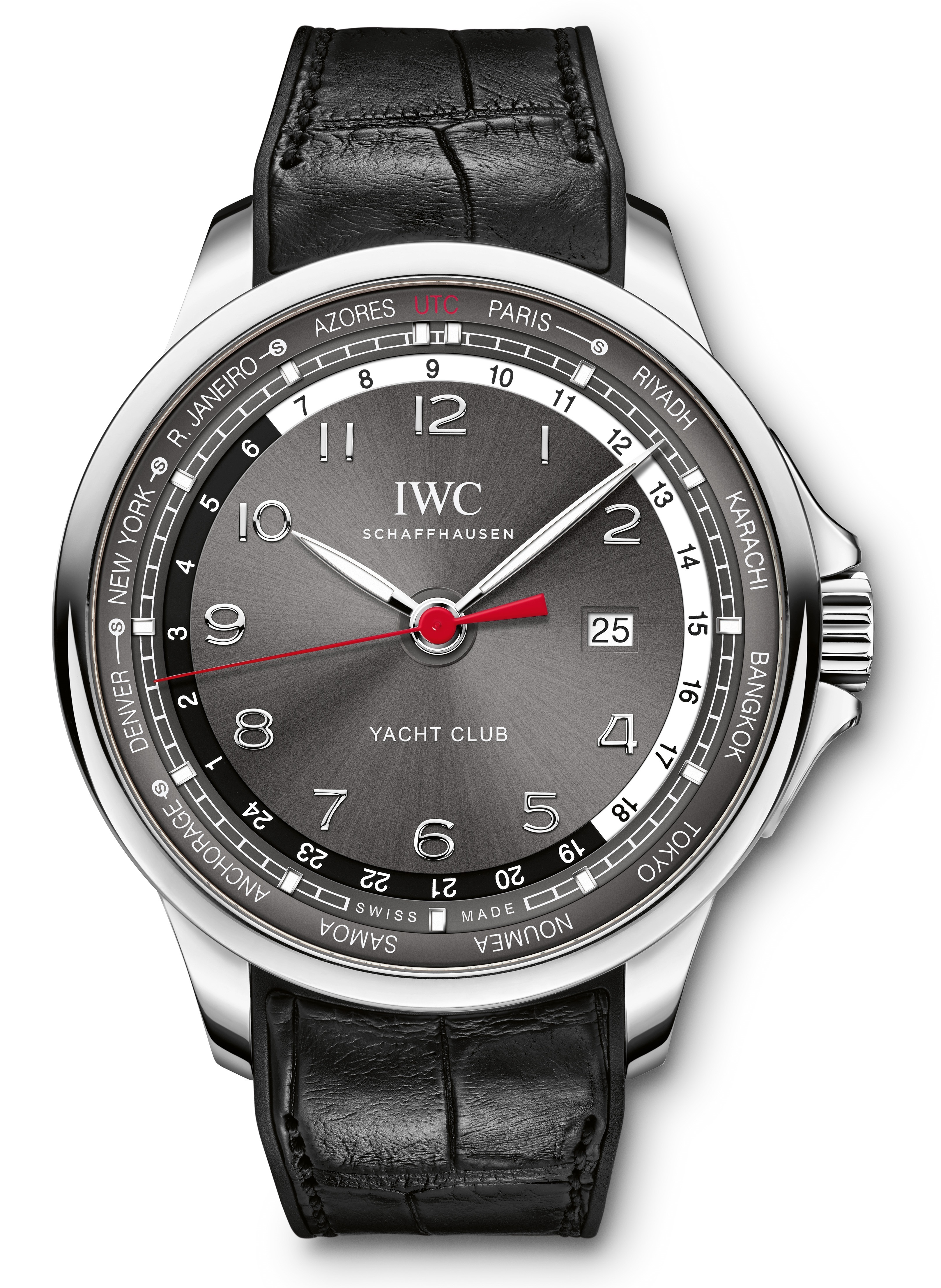
The main selling point of this watch is the world time complication after which it is named. It’s not the first time IWC have used this complication in their watches, nor the first outing for this movement in their range or indeed others: Baume & Mercier use the IWC 35370 in the Capeland Worldtimer (although that might seem strange, both brands are owned by the Richemont Group). As for an in-house forerunner, the IWC Pilot’s Watch Worldtimer uses the IWC 35370 too. It’s a reliable automatic movement with 35 jewels, a 42-hour power reserve, a central hacking seconds hand, a date display and, of course, the worldtimer function.
So here’s how it works: The best way to understand this is to imagine that this watch is actually two watches in one case, one of them keeping time where you are, the other one keeping track of time everywhere else. First things first, you need to set the date and synchronize the 24 hour wheel with the clock. If it is midday in London, the number 12 should be located beneath the city’s name on the outer ring. Now, assuming you’re in London, you then set the central hour, minute, and seconds hand to midday too. But what if you go to Paris? Simple! Just utilize the jump hour function that enables you to move through time zones with a turn of the crown. You just turn the crown once and the hour hand jumps from 12 to 1. Crucially, however, while using this mode of time-setting, the 24-hour ring remains unaffected. It will not try and stay in sync with the central display and thus make reading the time back home (or anywhere else for that matter) a piece of cake.
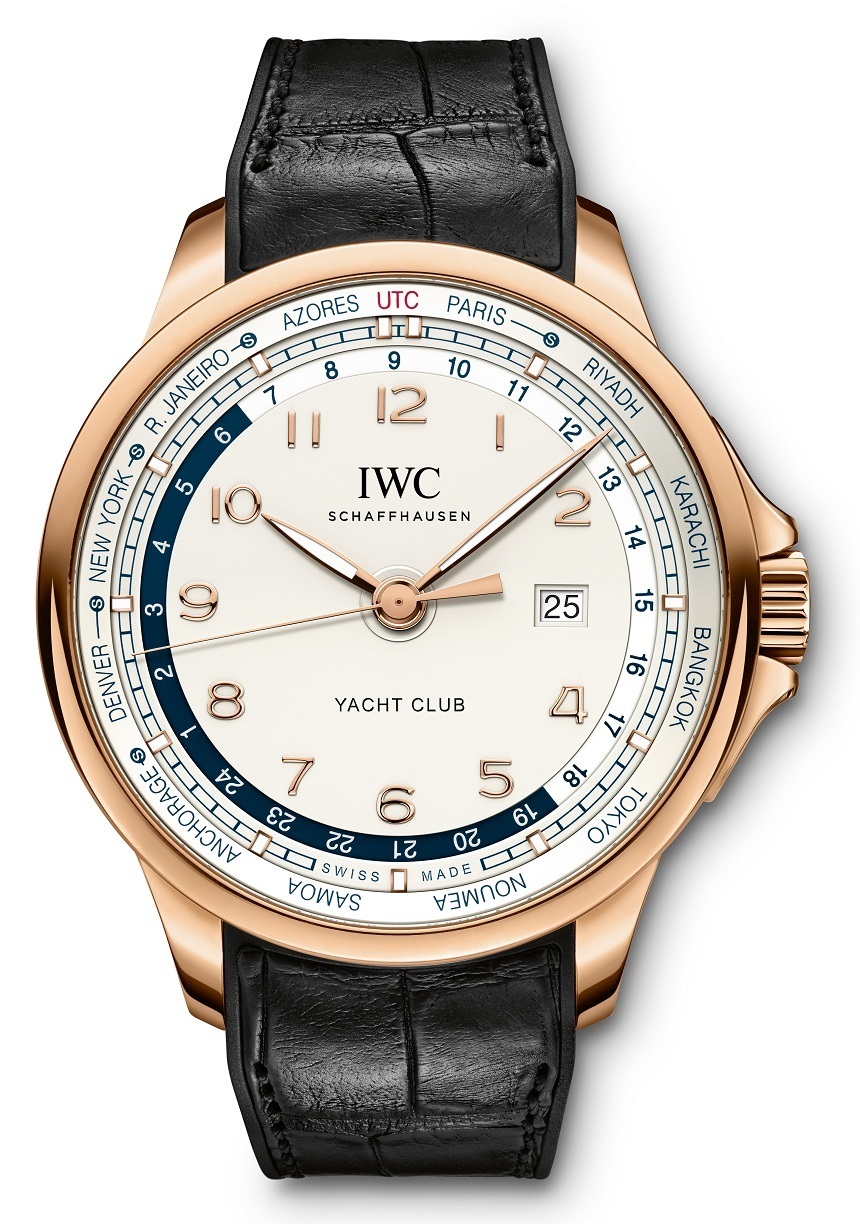
It really is cool. It’s so easy to just glance at the place name and see the number on the 24-hour dial beneath it. All you’ve got to do is disregard the hour hand in the center and you can tell the time in any of the featured time zones in seconds. Remember, however, this complication will need some manual adjustment if you’re traveling to certain parts of the world where the time zones are irregular. For example, New Delhi is UTC +5:30 and Kathmandu a bizarre UTC +5:45. You can still set the minutes yourself, though, so your watch will always be able to give you the right time.
This dial is superbly legible, making it impossible to ignore how much the IWC Portugieser Yacht Club Worldtimer watch benefits from its size. The uncluttered dial and relatively simple set-up make this watch a joy to read. Worldtimers are finicky things and often appear busy. Achieving this level of success could see this model rub shoulders with established heavy-weights such as the aforementioned Baume & Mercier Capeland, the Vacheron Constantin Patrimony Traditionnelle World Time Watch, the Montblanc Heritage Spirit Obris Terrarum Watch, and my personal favorite contender for the crown, the Nomos Zurich Worldtimer Blue Watch, released in September 2014.
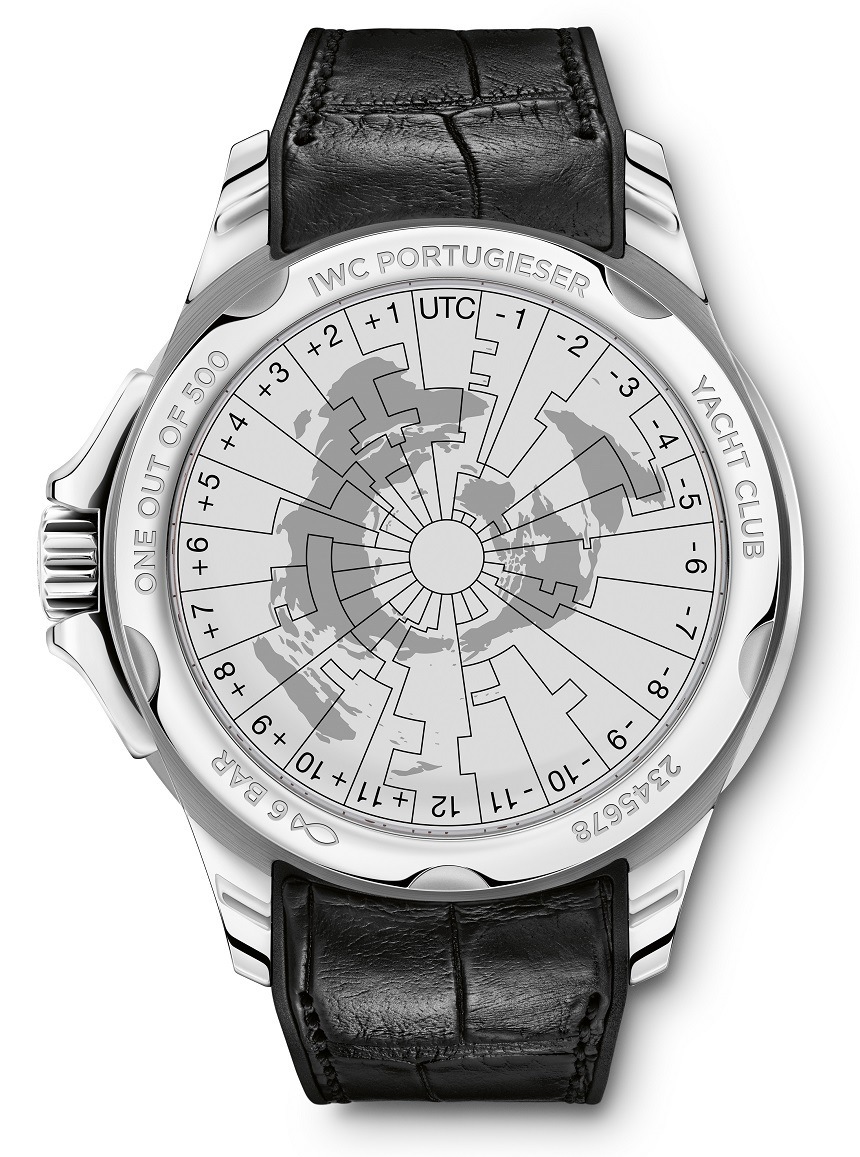
The IWC Portugieser Yacht Club Worldtimer case back provides an interesting conversation point. Rather than a glass back exposing the movement, IWC have chosen to decorate the glass with a ‘map’ of the world time zones (it’s as if you’re looking down on the Earth from directly above the North Pole. Given the modular and therefore somewhat unremarkable appearance of the calibre 35370, IWC may have hidden it deliberately. I don’t mind this so much, because as attractive as I find the IWC 35370, this case back is at least something different. It’s a bit cutesy, perhaps, but then, I like novelty as long as it’s well executed. From the looks of things, it is at least a sharp and striking image. I also like the scalloped grooves, cut into the edge of the case back so that the case back opener can engage.
This watch checks in with some very solid vital statistics. At 45.4mm-wide and 14mm-tall, the robust case is water resistant to 6 bar, thanks in part to a screw-down crown. You’ll be able to see the display clearly, because IWC have fitted a convex sapphire crystal, finished with an anti-reflective coating on both sides.
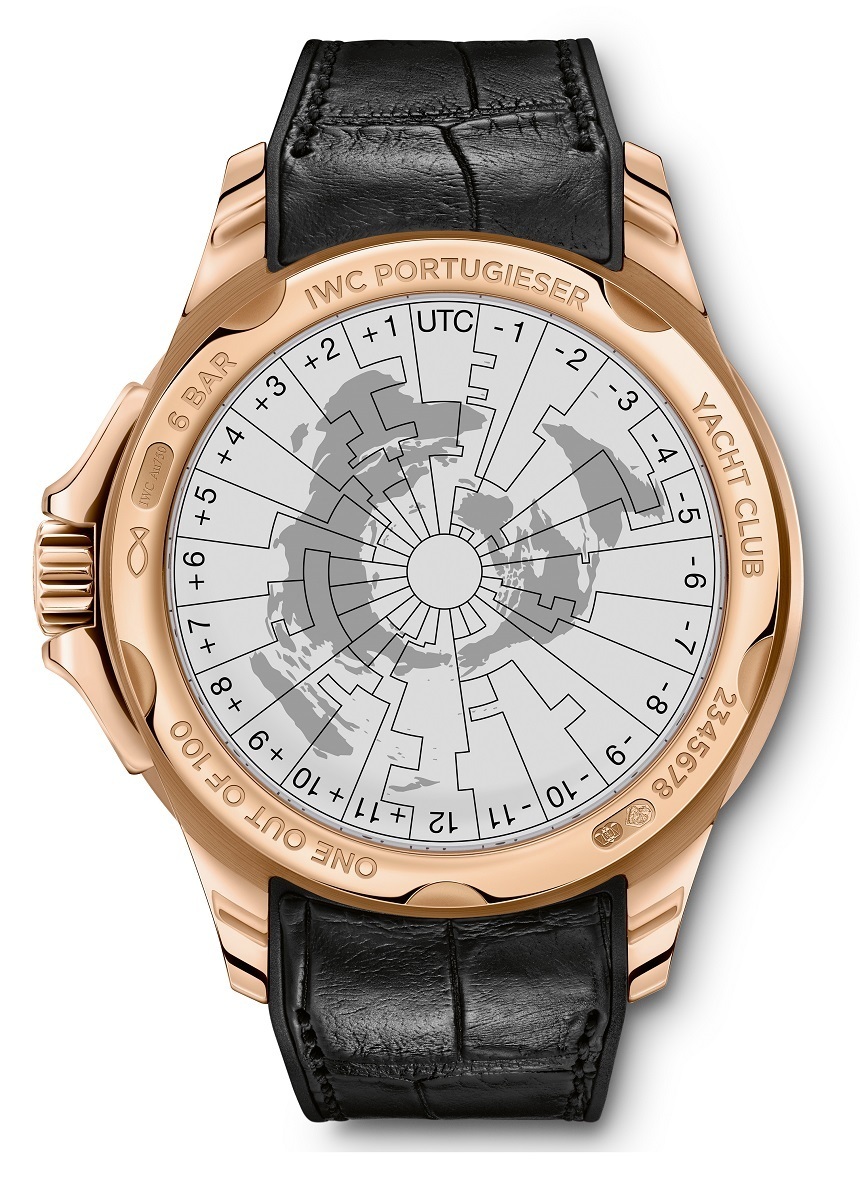
There’s no way I can review this release without passing comment on the strap. I’m a real stickler for a well-designed strap or bracelet, often vacillating in opinion between a traditional alligator leather or an ultramodern, hypo-allergenic rubber. The former exudes class and ages beautifully, but its lifespan is nowhere near that of rubber, nor is it always as comfortable. The rubber straps I’ve seen lately – particularly those from Breitling and Bremont – provide a new level of comfort. If it weren’t for the fact that rubber is often a jarring material choice in the dress watch sphere, I would be tempted to take it every time. Here though, IWC employs the growing trend of hybrid straps. The strap is rubber at its core and thus boasts greater durability, but it features an alligator leather inlay, effectively transforming its appearance to that of a totally different material. Although this brilliant idea is not exclusive to IWC, the brand should be praised for turning to it without fear of rebuke.
If you’re a fan of the brand, the featured complication, or larger dress watches, the IWC Portugieser Yacht Club Worldtimer has something for you. Of the three main criteria this watch satisfyingly fulfills, I personally appreciate the complication above the other two. That said, the recent releases from IWC have seen the brand sky-rocket in my own estimation. If the products continue in this fashion, with such great attention paid to the requirements of a modern and ever more discerning audience, and with all aspects of the brand’s heritage handled so sensitively, I imagine an IWC Portugieser will find its way onto my wish-list soon. The IWC Portugieser Yacht Club Worldtimer watch is limited to 100 pieces in Rose Gold priced at $26,200 and 500 in stainless steel with a price tag of $10,400. iwc.com
